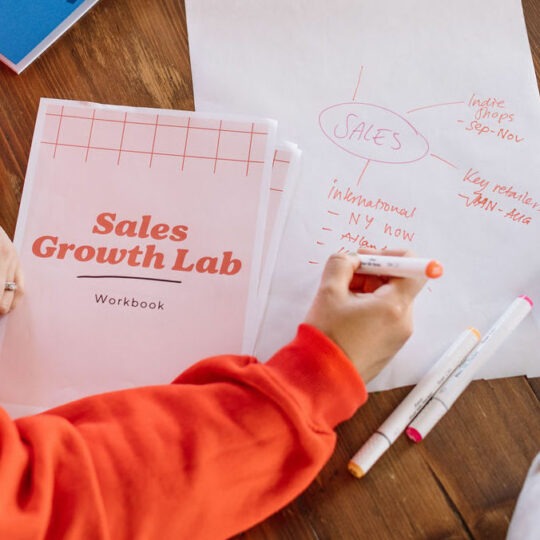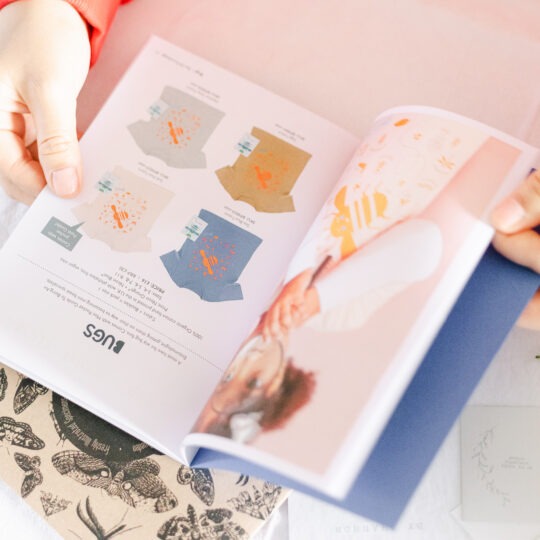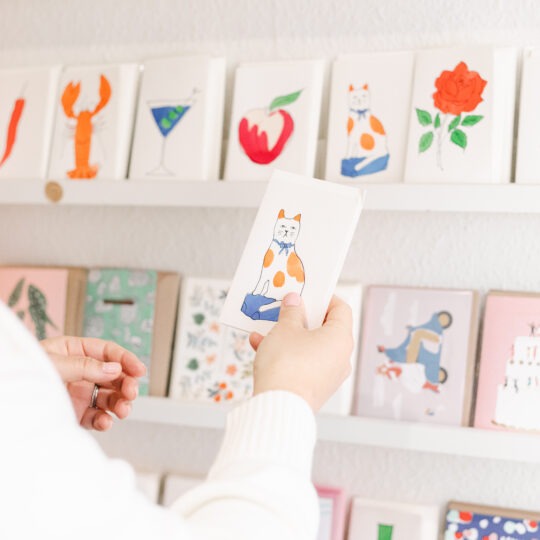Inspiration, Spotlight
A guide to wholesale with the Small Business Collaborative
If you’re ready to see your products flourish in a retail environment, read on for our beginners guide to wholesale with the Small Business Collaborative.
From nailing down your prices to finding reliable stockists, there’s a lot to consider when it comes to wholesale. But don’t fear! With a little help from our wholesaling expert and friend, Therese, we’ve pulled together some useful tips to help you sell to shops with confidence…
Hi Therese! Tell us about the Small Business Collaborative…
I work with creative business owners and help them start and grow their wholesale. This includes helping them price their products for profit, perfect their sales materials, exhibit at trade shows, find a way to sell that works for them (without the ick!) and put processes in place so they can grow.

Image credit: Small Business Collaborative
In 2019, I traded selling mass-produced gifts to working with creative and purpose-driven brands such as Our Lovely Goods, Studio Wald, Claude & Co, Phoebe Grace, Whole Punching, Ponderlily and many others.
After over a decade in the home and gift industry, I’m proud to sit on the National Committee for The Giftware Association. I host a podcast called Let’s Talk Shop, a seasonal business podcast sharing stories and business advice. In my spare time, I’m a bit of a grandma (not literally), but I like crafting, walking in the countryside and cuddling with my dog Milo.
What is wholesale?
In a nutshell, it means selling in bulk at a lower price to a business customer. Often this business will be a retailer who will re-sell your products in their online or brick and mortar store, but sometimes it can also be a corporate gifting client, a hotel, subscription box or an event.
Why should small businesses consider wholesale?
- It’s an additional revenue stream that can make your business more resilient.
- Paid for marketing – more eyes on your brand as you are discovered by your stockist’s customers who already know, like and trust them.
- The economy of scale – as you grow the volumes you can sell, you can negotiate better prices with your suppliers.

Image credit: Small Business Collaborative
What are your wholesaling essentials?
First, you have to be clear on your numbers. You need to know that you are making money on each sale and how many you need to sell to break-even.
When you start to wholesale, you might need to do a full pricing review to ensure you understand your numbers as you will be trading on lower margins. Once you’re clear on your pricing, having good product photography and a good line sheet or catalogue is essential.
What makes a stand-out wholesale catalogue?
Good photography. If you don’t have much budget for this, keep it simple with a plain background, natural lighting and the same angle and amount of white space around the products. This will ensure that your product pages have symmetry, making it much easier for the eye to look at and take in your products.
Other than that, it also needs to have all the information a buyer needs to know to buy from you. For more tips, have a look at this blog.
Are there any other print products that can help win sales?
You never know when you will meet a potential retail buyer or business contact, so I still believe in keeping Business Cards on you. These will come in handy in many surprising ways and are essential at a networking event.
If you’re exhibiting at a trade show and you don’t have an iPad order-taking system, then I would have a printed order form to make it quick and easy for you to take a customer order.

Image credit: Bella and Phoenix
How do small businesses know how to price products fairly, yet competitively?
Often, I see small businesses underprice their products rather than overprice them. I teach pricing not based on a set formula, but on value and who you are selling to, so I always start with some market research.
I don’t believe in formulas such as your cost price x 2 = your wholesale price x 2 again to get your retail price. I don’t think it says anything about your brand. Imagine how much more affordable an iPhone or Balenciaga T-shirt would be if big businesses were priced this way.
To start, look at other brands with similar customers that you want to sell to and objectively compare your product to theirs. This will give you a range of what your products should sell for, and then look at how this works with your cost and wholesale prices to ensure you meet your margin requirements.
Where can small businesses find retailers to sell to?
There are many places to find retailers to sell to, so I’ve listed a few below:
- Wholesale marketplaces such as Faire.com and Ankorstore.
- Follow hashtags such as #myshoplife to find and get to know many independent stores on social media.
- Look at where complimentary brands to yours are stocked. Products that would sell well sitting next to yours but that are not direct competitors of yours. For example, if you sell monochrome greetings cards, look for a monochrome stationery brand that would complement your products.
- Trade shows!

Image credit: Sisterhood Store
What are your 3 best tips for winning over stockists?
- Make it easy to buy from you, by having an easy-to-view and buy from line sheet or catalogue.
- Make your approaches personal and only contact retailers you can picture your products in.
- Be persistent. A sale very rarely happens after the first email or visit.
Finally, how can people find out more about you and the packages you offer?
The best place to find out more about my services is on my website, Small Business Collaborative. I also spend more time on Instagram than I care to admit, so I’m always up for a chat over in the DM’s. My handle is @small_business_collaborative.
From Business Cards to Saddle Stitched Brochures, our Retail Collection is here to help your small business get discovered by your dream stockist… discover more at the link below.
